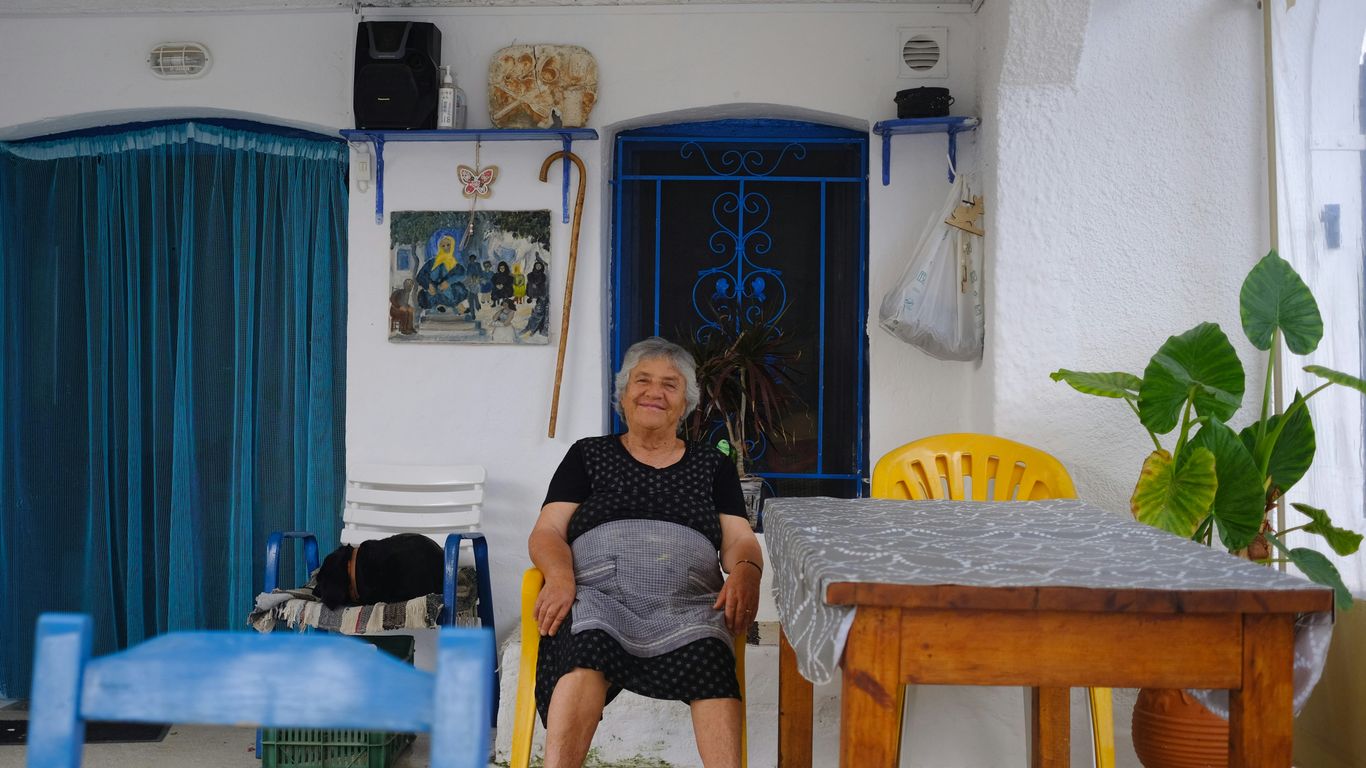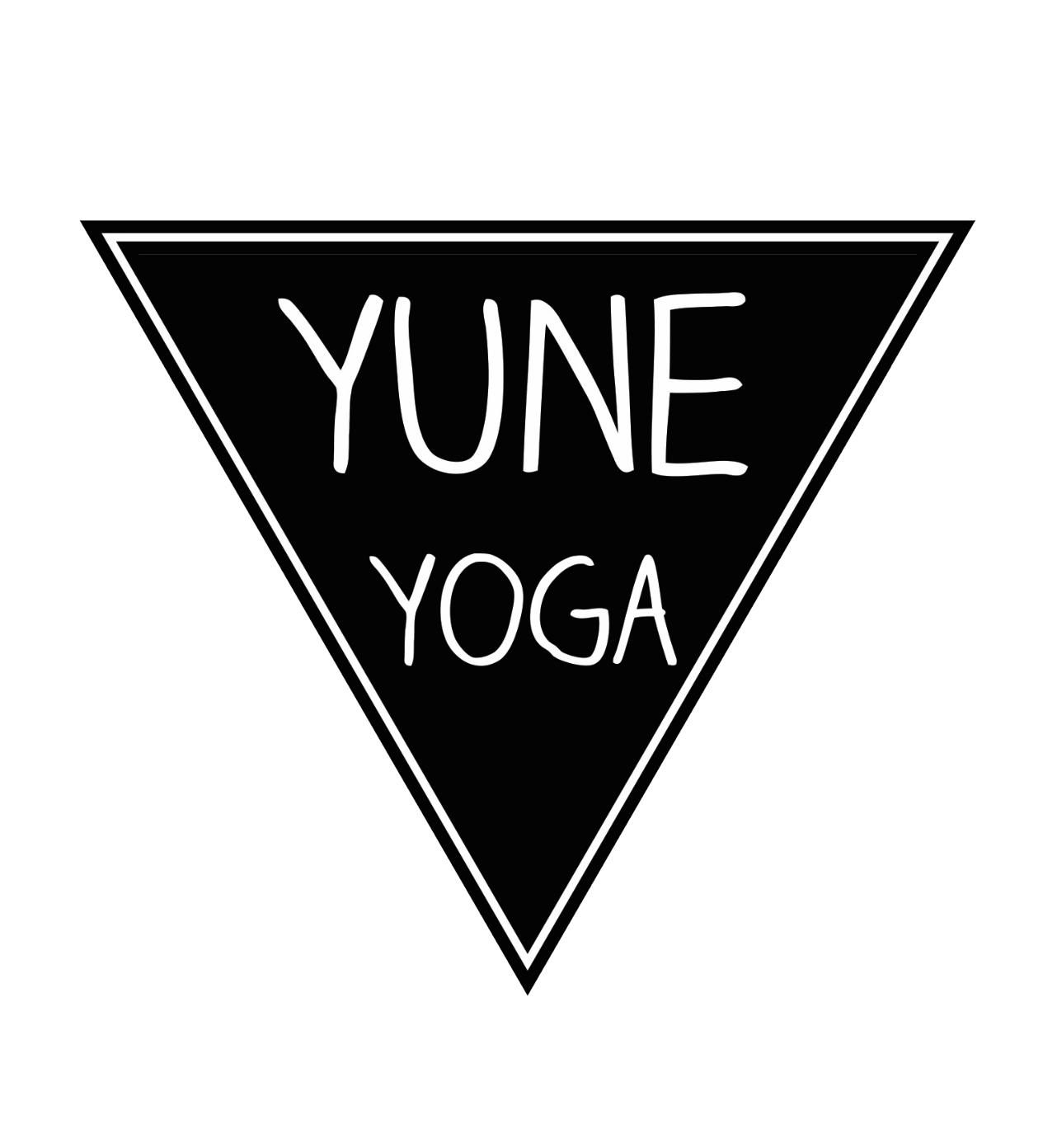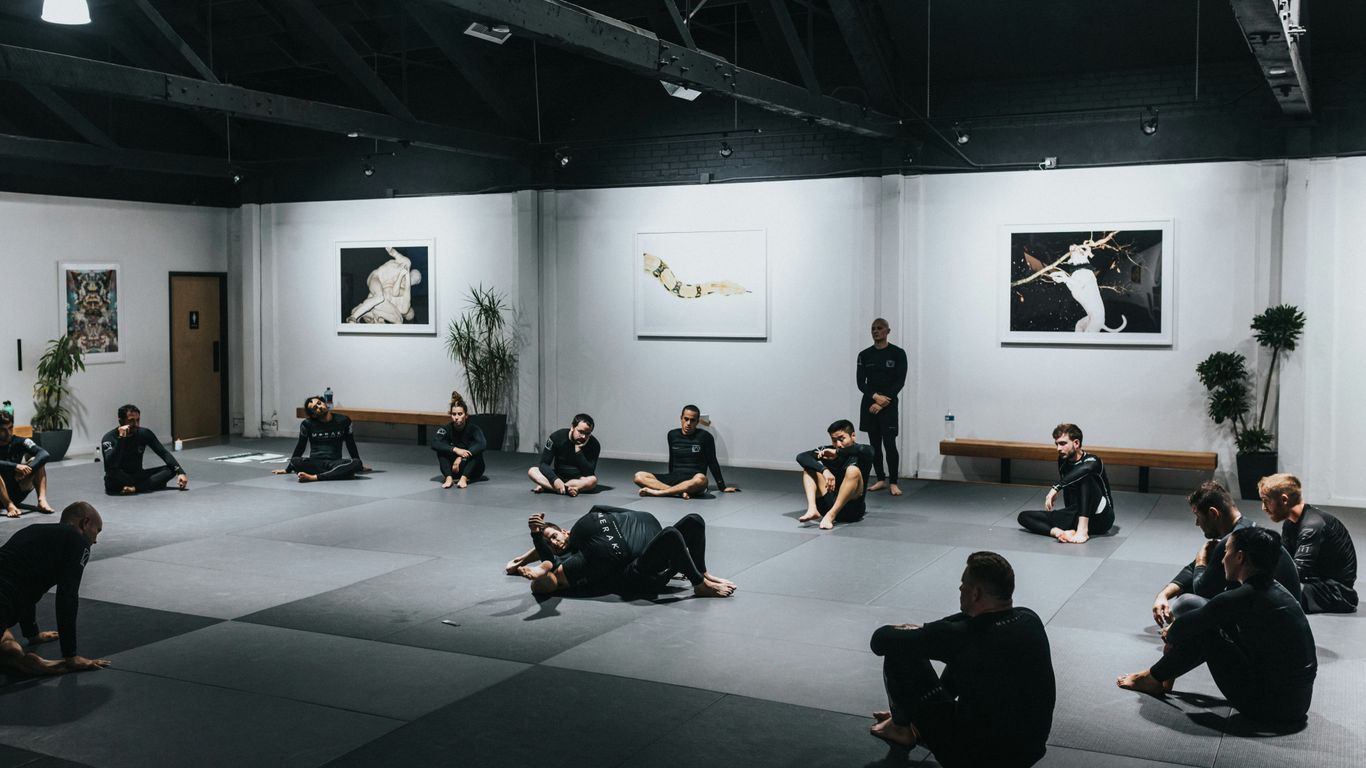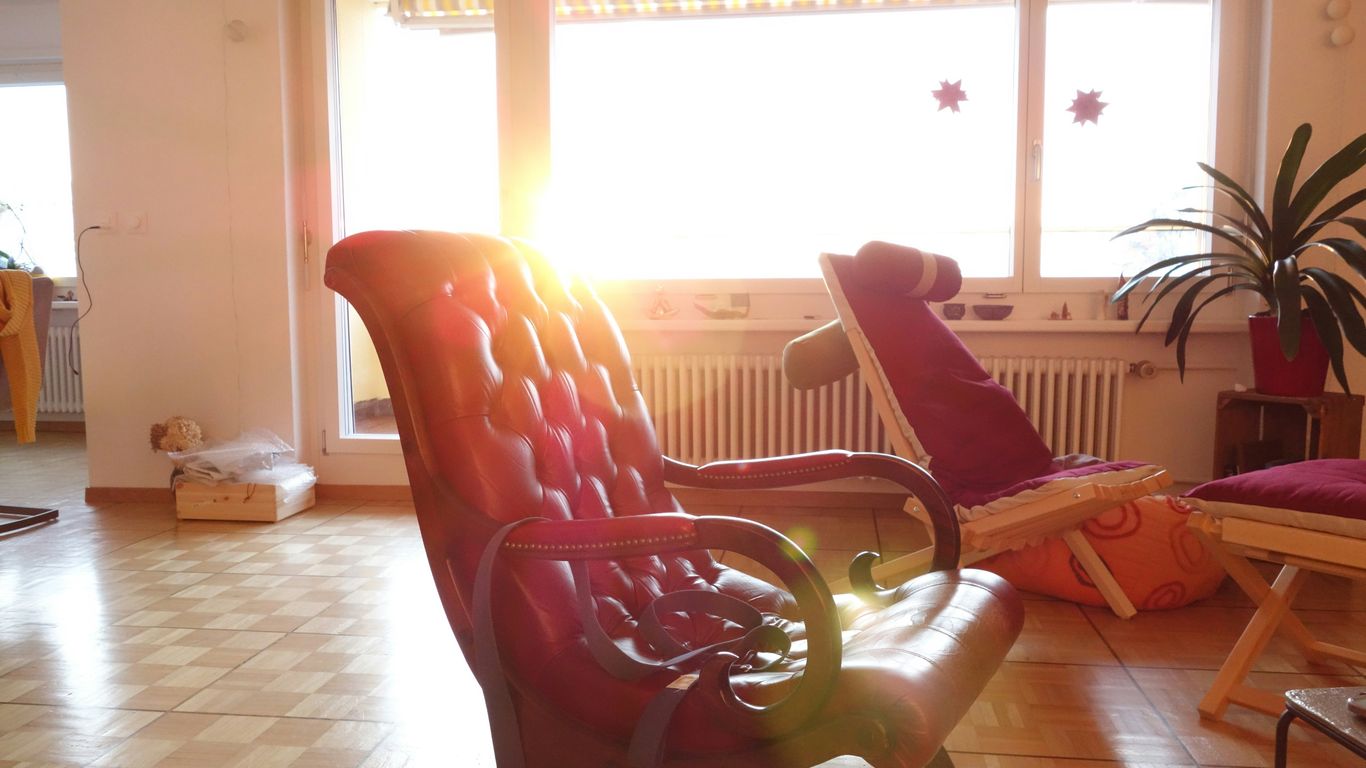
Chair Senior Yoga: Gentle Seated Routines for Flexibility and Balance
Chair senior yoga is a great way for older adults to get the benefits of yoga without having to get up and down from the floor. If you’ve ever felt like regular yoga is a bit too much—maybe because of joint pain or balance issues—chair yoga can be a good fit. You’ll use a sturdy chair for support, and all the movements are done while sitting or sometimes holding onto the chair. It’s simple, gentle, and you don’t need fancy gear. This guide will walk you through the basics, from getting set up safely to trying out some easy routines for better flexibility and balance. Let’s get into it.
Key Takeaways
- Chair senior yoga makes yoga accessible for people who have trouble with traditional poses or getting down to the floor.
- A sturdy, armless chair and comfortable clothes are all you need to get started.
- Gentle seated routines can help improve flexibility, balance, and muscle strength.
- Always listen to your body and modify movements as needed—there’s no need to push through pain.
- Adding chair yoga to your weekly routine can support both physical and mental well-being.
Benefits of Chair Senior Yoga for Older Adults
Chair senior yoga is more than just a gentle way to move; it's a real chance for older adults to feel more comfortable and confident in their bodies. The routines can be done from the support of a chair, making yoga accessible to those who might face difficulties with balance or limited mobility. By using a chair for support, older adults get to enjoy the perks of getting active, all without having to get down on the floor.
Improving Flexibility and Joint Health
Staying flexible makes a world of difference in daily life, but as we age, stiff muscles and joints often get in the way. Regular chair yoga practice can really help tackle this problem:
- Helps stretch the hamstrings, shoulders, and back
- Promotes a greater range of motion, making activities like reaching and bending less of a hassle
- Reduces joint pain and stiffness common with arthritis
Chair yoga provides a safe and accessible way to improve flexibility, reduce stress, and support joint and muscle health, allowing individuals to enjoy yoga's benefits anytime and anywhere. For more ideas on routines you can do at home, see this overview of chair yoga approaches.
Some mornings, just reaching for the top shelf or tying your sneakers can feel tougher than it used to. Gentle chair yoga stretches add up, making those simple movements easier bit by bit.
Supporting Balance and Fall Prevention
Falls are a big worry for many older adults, but not everyone feels steady enough for standing exercises. Chair yoga includes movements designed to help with balance, even while you’re seated:
- Strengthens muscles around the ankles, knees, and hips
- Improves awareness of body position (what’s called proprioception)
- Builds confidence by practicing safe balance work with support close by
Below is a quick look at how chair yoga can support balance compared to traditional yoga:
| Benefit | Traditional Yoga | Chair Yoga |
|---|---|---|
| Standing Balance Training | Yes | Limited |
| Seated Balance (Proprioception) | No | Yes |
| Fall Risk Reduction | Moderate | High |
Progress in balance may take a little time, but for many, every small win—like getting up safely or moving around the kitchen—makes a huge difference.
Enhancing Muscle Strength and Stamina
Keeping muscles strong gets more important with age. Weakness can creep up over the years if we don’t stay active. Chair yoga focuses on holding and moving through postures that work different muscle groups:
- Builds strength in legs, arms, and core using body weight
- Increases stamina with repeated slow movements and holds
- Makes it easier to perform daily activities like climbing stairs, standing up, or carrying groceries
Here are common areas that benefit from chair senior yoga:
- Hands, wrists, and forearms (lifting and grip)
- Thighs, calves, and hips (standing, walking)
- Shoulders, back, and chest (reaching, posture)
With some consistency, most people notice they tire less easily and just feel a bit sturdier as they go about their day.
Setting Up Safely for Chair Senior Yoga
Taking time to put your yoga space together makes everything smoother and safer—especially if you’re new or have any mobility issues.
Choosing the Right Chair and Space
- Pick a chair that is sturdy with a flat, firm seat and a solid back. Avoid anything with wheels or wide armrests, as those can get in your way or slide unexpectedly.
- Your knees should be lined up at a 90-degree angle and your feet should rest flat on the floor. If you’re on the short side, try sitting on a folded towel or cushion to raise your seat up.
- Set the chair on a non-slip surface (a yoga mat under the chair does the trick). Make sure there’s enough room to move your arms and legs freely.
| Feature | Recommended Option | Not Recommended |
|---|---|---|
| Chair Type | Sturdy, no wheels | Office chairs |
| Seat Height | ~18 inches | High stools |
| Armrests | None or low profile | Wide, fixed |
Wearing Comfortable and Supportive Attire
- Go with loose, breathable clothes so you aren’t restricted during movements. Pajama pants or sweatpants work great.
- Supportive sneakers or grippy, non-slip socks help keep your feet steady.
- Avoid long jewelry or scarves that could accidentally get caught as you move.
Guidelines for Safe Practice
- Start by talking with your doctor or a physical therapist, especially if you have balance issues or joint pain. They might have tips just for you.
- For your first few sessions, go slow and don’t rush through the poses. Sit at the front edge of the chair if that helps you feel more upright, just don’t go so far you feel like you might slip off. Sitting at the front edge of a chair can help with posture as you settle in.
- Always listen to your body. If something feels uncomfortable, stop, reposition, or skip that pose.
Sometimes, just sitting comfortably and moving your arms or rolling your shoulders is enough for your body on any given day. Small steps really do add up over time, so be patient with yourself and try not to force any movements.
Essential Chair Senior Yoga Warm-Up Movements
Warming up before chair yoga does more than just loosen up your body—it helps settle your mind and sets a steady foundation for practice. A simple warm-up routine avoids stiffness and sparks gentle movement in sore muscles, especially for older adults. Here’s a closer look at a few key chair warm-up movements before you try more challenging poses.
Seated Mountain Pose to Start With Stability
- Sit upright on a sturdy chair, feet flat on the floor and knees at a 90-degree angle
- Hands rest lightly on your thighs
- Lengthen your spine, gently press your shoulders down and back
- Focus on even inhales and steady exhales for up to one minute
This basic posture cues your body to find steadiness and balance. It can even help reconnect you with your breath and posture after a busy morning. If you’re looking for more cushion and support, a mat like the Rowan Yoga Mat underfoot can make things more comfortable and give your chair added grip.
Even when you feel rushed to get started, taking one minute in Seated Mountain Pose can calm your nerves and ground your mind.
Gentle Seated Shoulder Rolls and Neck Stretches
Shoulder and neck tension builds up quickly, so releasing it before moving on can prevent aches later on:
- Inhale, roll your shoulders up toward your ears
- Exhale, roll them slowly back and down; repeat this for 5 breaths
- Slowly turn your head side-to-side, then tip ear toward shoulder on each side
- Keep movements small and gentle, never forcing into discomfort
These motions help ease tension you might not realize you’re holding—a few rounds can make your shoulders feel lighter right away.
Warming Up the Spine: Seated Cat-Cow
Spinal flexibility is super important, especially as you age. Seated Cat-Cow does just that with minimal strain:
- Place hands on thighs
- Inhale, arch your back and lift your chest and chin slightly (Cow)
- Exhale, round your spine and tuck your chin to your chest (Cat)
- Flow gently between the two with the rhythm of your breath, 5 times total
This little sequence works out kinks in the back and reminds you how breathing and movement are supposed to work together.
Key Reminders for Chair Yoga Warm-Ups:
- Check that your chair is stable and on a non-slip surface before you begin
- Never push into sharp pain or pinching sensations
- Move slowly and breathe steadily—there’s no rush
Starting with these warm-up moves every time can help you get more out of your session, and stick with your practice for the long haul.
Gentle Chair Senior Yoga Poses for Flexibility
Chair yoga can truly open up movement for older adults, making flexibility more possible even if getting up and down isn’t easy. These gentle routines done while seated can help stretch out tight muscles and make daily activities a little smoother. Below, you’ll find step-by-step instructions for three foundational chair yoga poses that focus on flexibility—each one can be adapted for your comfort. Remember, consistency is what brings results over time.
Seated Forward Bend for Hamstring Release
- Sit forward on your chair with your feet flat, hip-width apart.
- Inhale, reaching your arms upward to lengthen the spine.
- Exhale and gently fold forward from your hips, letting your hands rest on your thighs, shins, or ankles—whatever feels right.
- Breathe deeply, and stay in this position for 20–30 seconds.
- To get back up, press into your feet and slowly rise as you inhale.
- Only hinge as far as is comfortable.
- Let your head relax but don’t strain your neck.
- Repeat 2–3 times.
Taking a gentle forward bend can help relieve low back tension and lengthen tight leg muscles, which is so common as we age.
Dynamic Seated Knee Lifts
- Sit upright, feet flat on the floor, hands resting on your thighs.
- Inhale and lift your right knee toward your chest.
- Lower your right foot as you exhale.
- Switch sides and repeat with your left knee.
- Continue to alternate, aiming for 10 repetitions per leg.
This movement helps keep hips and thighs moving and works the core without any strain on your back.
Seated Spinal Twist for Back Mobility
- Sit with your feet stable on the ground and shoulders dropped away from your ears.
- Place your right hand on the outside of your left knee.
- Inhale tall; exhale and gently twist to the left, looking over your left shoulder if comfortable.
- Hold for 20–30 seconds, breathing steadily.
- Return to center and repeat on the opposite side.
- Focus on lengthening the spine before each twist.
- Never force the movement—gentle is more effective.
| Pose | Target Area | Suggested Hold Time |
|---|---|---|
| Seated Forward Bend | Hamstrings, low back | 20–30 sec |
| Seated Knee Lifts | Hips, core | 10 reps per leg |
| Seated Spinal Twist | Spine, back | 20–30 sec per side |
These routines are approachable, but if you find one difficult, skip it and focus on what feels right for you. As chair yoga offers many of the same benefits as traditional yoga, you’re still supporting your flexibility, joint health, and comfort by simply showing up for yourself. Stick with it and you’ll likely notice it gets easier with each session.
Building Balance With Chair Senior Yoga
Maintaining good balance as we age isn’t just about standing tall—it’s about being able to move through daily life with confidence. Chair senior yoga lets you practice balance right from your seat, which is perfect if you’re nervous about falls or just feel unsteady when standing. These gentle routines help train both your core and muscles, while letting you progress at your own speed.
Seated Warrior and Chair Eagle Arms
- Sit toward the front edge of your sturdy chair with feet flat.
- For Seated Warrior, step your right foot back slightly and turn it out, keeping your left knee bent and both hips facing forward. Reach your arms up or out for a gentle stretch.
- For Chair Eagle Arms, wrap one arm under the other and try bringing palms together, raising your elbows as you sit tall. Switch sides after a few breaths.
- Hold each pose for 20–30 seconds, focusing on your breath.
These postures aren’t just about flexibility—they encourage you to focus on alignment, which is a big driver of balance.
Using Core Engagement in Seated Poses
Activating your midsection during exercises can make a surprising difference in your day-to-day stability.
Here’s how you can engage your core:
- Sit upright, shoulders relaxed, and imagine "zipping up" the muscles from your pelvis toward your ribs.
- While holding poses like Seated Mountain or Seated Knee Lifts, gently tighten your abdominals as you breathe.
- Notice the improved sense of steadiness when your center is strong, even while simply sitting.
A little core activation goes a long way in reducing wobbly moments when reaching, twisting, or getting in and out of a chair.
Progressing to Standing With Chair Support
If you’re comfortable and want to challenge yourself, you can carefully add some standing practice with the chair as a safety tool.
- Place hands on the backrest, feet hip-width apart.
- Try gentle mini-stands: rise to a standing position, then slowly lower back to your seat.
- If standing feels okay, shift weight onto one foot for a second or two, keeping the chair in reach.
- Only progress further if you feel stable—do not rush.
| Level | Chair Used For | Example Pose |
|---|---|---|
| Beginner | Full support, seated | Seated Warrior |
| Intermediate | Hand on chair for safety | Supported Stand |
| Advanced | Light touch, less support | Single-Leg Stand |
Practicing balance with a chair is not about pushing your limits—it's about building trust in your body, one steady, supported step at a time.
It’s always okay to stay seated if that feels best. Over time, you might notice not just better balance sitting and walking, but a growing confidence in movements you might have avoided for years.
Cool-Down and Relaxation Techniques in Chair Senior Yoga

Ending your chair yoga session with a proper cool-down gives your body a chance to unwind and your mind a moment to regroup. Even just a few minutes of gentle movement and quiet breathing can make a difference in how you feel afterward. A thoughtful cool-down can help reduce muscle tension and support a sense of calm and balance.
Seated Ankle Rolls for Lower-Body Mobility
Ankle rolls are a simple way to keep your feet and ankles moving after your practice.
How to do it:
- Sit tall in your chair with feet flat on the floor.
- Lift one foot a few inches off the ground.
- Gently circle your ankle clockwise for about 15 seconds.
- Switch directions and circle counterclockwise.
- Repeat on the other foot.
- Improves circulation
- Relieves tension in lower legs after sitting
- Keeps ankles flexible for daily walking
Guided Relaxation to End Your Practice
Stepping into relaxation, even briefly, helps your nervous system settle. It’s a time to notice your breath and body without any need to move.
Steps for simple guided relaxation:
- Sit comfortably, feet on the floor, hands on thighs or in lap.
- Close your eyes if that feels comfortable.
- Notice your breath coming and going. Slow it down with every exhale.
- Mentally check in with each area of your body, releasing any bits of lingering tension.
- Stay here for 1-2 minutes, just breathing.
This end-of-session quiet can make your practice feel more complete, leaving you more centered for the rest of the day.
Breathwork for Calm and Mindfulness
Breathwork is one of the simplest tools you can practice anywhere, and it pairs especially well with chair yoga. Taking some time for mindful breathing at the end of your session can help your mind feel steadier.
A basic breathwork routine:
- Sit up tall with relaxed shoulders.
- Inhale slowly through your nose for a count of four.
- Exhale through your mouth for a count of six.
- Repeat this rhythm for six to ten deep breaths.
- Calms the nervous system
- Lowers feelings of stress or anxiety
- Makes it easier to sleep after evening sessions
For extra comfort underfoot during these cooldowns, you might consider a joint-friendly mat to support your body’s relaxation.
A gentle finish to your chair yoga practice isn’t just about routine — it helps your body soak in all the good you’ve just done. Even a couple of minutes on these cool-down techniques can turn chair yoga from a workout into something that takes care of your mind, too.
Making Chair Senior Yoga Part of Your Weekly Wellness Routine
Building a habit with chair yoga can turn a few minutes of movement into something that really affects your day-to-day life. A routine doesn't mean you have to do hour-long sessions. Short, regular practices often work better, especially if you're just starting out.
Even a few dedicated days each week can help you stay connected to your body and mind while supporting joint comfort and everyday movement.
Tips for Modifying Poses to Suit Your Needs
- Use extra support such as cushions for your lower back if your chair feels too hard.
- Move slowly and adjust poses if anything feels uncomfortable—never force a stretch past a gentle limit.
- Try changing the order or duration of poses to see what fits your energy levels on different days.
- Remember that chair yoga adaptations can keep your movements gentle while still easing joint pressure.
Tracking Your Progress and Listening to Your Body
Keeping track of how you feel each day makes a difference. Try a simple chart:
| Week | Sessions Completed | Noticed Benefits (e.g. less stiffness, better sleep) |
|---|---|---|
| 1 | 2 | Mild decrease in back pain |
| 2 | 3 | Slept better, more energy in mornings |
| 3 | 3 | Stretching feels easier, balance improving |
- If a movement causes pain, stop right away and check with your healthcare provider if needed.
- Mark small milestones, like being able to sit up straighter or maintain a pose for a few extra breaths.
- Make note of good days and not-so-good days—they all count as valuable feedback from your body.
Combining Chair Yoga With Other Activities
Mixing chair yoga into things you already enjoy can make it even more fun.
- Add a short yoga session before or after your daily walk
- Use yoga as a gentle warm-up before gardening or hobbies
- Practice breathwork before reading or watching TV at night for added calm
You can sprinkle chair yoga throughout your week, whether it's five minutes in the morning or a longer session before bed. Consistency is often more important than intensity. If you stay flexible with your approach and listen to your body's needs, you’ll get more out of every session.
Conclusion
Chair yoga is a simple way for seniors to stay active, even if getting up and down from the floor isn’t easy anymore. You don’t need fancy equipment—just a sturdy chair and a little bit of space. These gentle routines can help you feel more flexible, steady, and relaxed. The best part? You can go at your own pace and adjust the moves to fit your comfort level. If you’re new to this, it’s a good idea to check with your doctor before starting. Over time, you might notice you’re moving a little easier or feeling a bit more confident on your feet. Give it a try—sometimes the smallest changes can make a big difference in how you feel every day.
Frequently Asked Questions
What is chair yoga and who is it for?
Chair yoga is a gentle form of yoga where you do poses while sitting in a chair or using it for support. It’s great for older adults, people with limited mobility, or anyone who finds getting up and down from the floor difficult.
Is chair yoga safe for seniors with health problems?
Chair yoga is usually safe for most seniors, even those with health issues, because it’s low-impact and gentle. However, it’s always best to check with your doctor before starting any new exercise routine.
What kind of chair should I use for chair yoga?
Choose a sturdy chair with a flat seat and no wheels. Make sure it doesn’t have wide armrests that could get in the way. Your feet should be able to rest flat on the floor when you sit.
Do I need special clothes or equipment for chair yoga?
You don’t need special gear. Wear loose, comfortable clothes that let you move easily. Supportive shoes or non-slip socks are a good idea, and make sure your space is clear and safe.
How often should I do chair yoga to see benefits?
Even doing chair yoga two or three times a week can help improve your flexibility, strength, and balance. The more regularly you practice, the better you’ll feel.
Can I do chair yoga at home, or do I need a class?
You can do chair yoga at home by following videos or printed guides. Some people like taking classes at community centers or online for extra support and guidance, especially when starting out.


